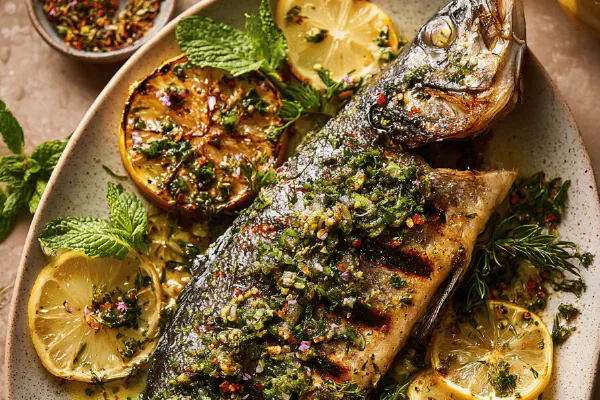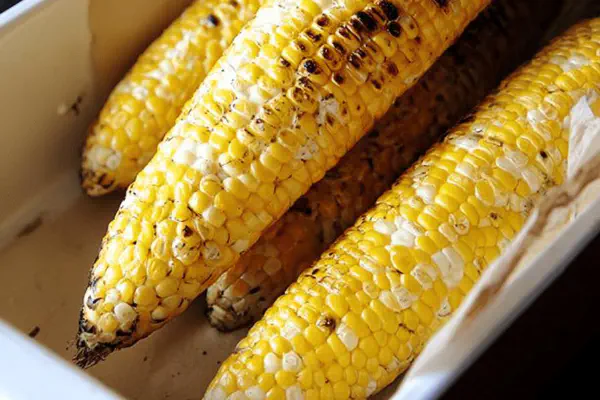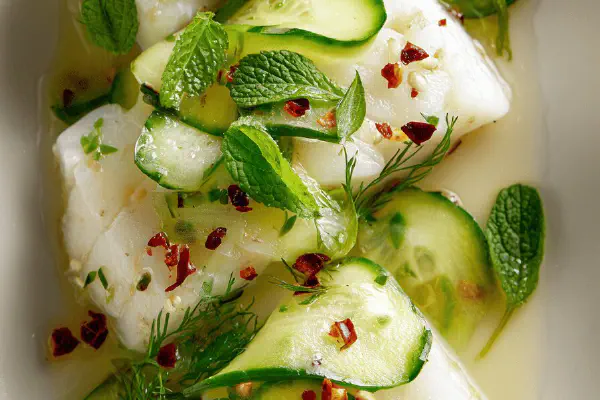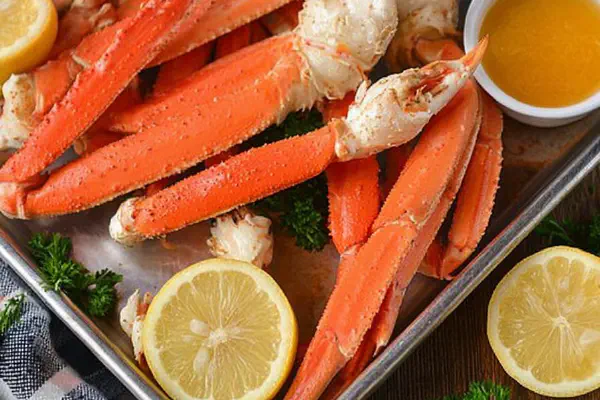Grilled Whole Red Snapper
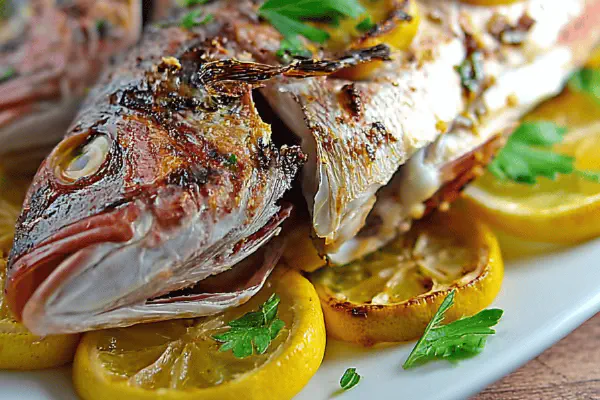
By Emma
Certified Culinary Professional
Ingredients
- 1 whole red snapper 1.5-2 lbs, scaled and cleaned
- 1/4 cup fresh parsley leaves, finely chopped, or swap with cilantro
- 3 garlic cloves, minced
- 1 1/2 teaspoons freshly ground black pepper
- 1 teaspoon sea salt for inside the fish
- 2 1/2 tablespoons sea salt for outside seasoning
- 1 tablespoon lemon zest, or substitute with orange zest for twist
- 8-10 lemon slices fresh
- 3 tablespoons extra virgin olive oil
About the ingredients
Method
- Cut diagonal slits on both sides of the snapper about 1 3/4 to 2 inches apart. Not just for looks—this breaks up thick flesh so heat penetrates evenly. Don’t stab too deep or it'll fall apart.
- In a small bowl, mix parsley, garlic, pepper, 1 teaspoon sea salt, and lemon zest. Rub about half this mix inside each fish cavity. A little under seasoning inside is better; outside salt can carry the punch.
- Stuff the fish cavities with 5-6 lemon slices. If slices resist folding, halve them. Squeeze some juice into the cavity for extra moisture.
- Brush olive oil on the outside completely, then scatter remaining 2 1/2 tablespoons salt over skin. Salt crust helps crisp skin and draws out moisture. Can swap olive oil for avocado or grapeseed oil if you want a higher smoke point.
- Set up grilling basket with an even layer of lemon slices on one open side. Lay fish flat on lemon bed. Cap fish with remaining lemon slices before closing. Keeps fish off direct heat and infuses zesty scent.
- Preheat grill to medium heat (about 350-375°F). Lay basket flat and let sizzle. Grill 9-12 minutes per side. Watch fish through the slits—once they turn opaque and flake apart when pressed, it’s ready. Skin should get lightly charred but not burnt black.
- Remove fish gently from basket with wide spatula. Let rest for 5 minutes—carryover cooking finishes doneness and keeps juices locked. Skin edible but bones lurk—eat cautiously.
- Intrigued how different lemon zest or substitution herbs shift flavor? Tried swapping lemon with thin orange slices or adding chili flakes inside. Each approach rewrites the experience.
Cooking tips
Chef's notes
- 💡 Make diagonal slits shallow enough; too deep and fish falls apart. Slits let heat penetrate thick flesh fast. Gives even cook, plus visual doneness clues. Watch color change through cuts—not just time. Flesh turns opaque, flakes easily pressed with spatula. Avoid stabbing too deep or juices leak out.
- 💡 Use parsley but swapping with cilantro or oregano changes flavor profile. Cilantro adds brightness, oregano earthiness. Garlic essential; balances citrus sharpness from lemon or orange zest. Lemon zest crucial for aroma, orange zest mellows bite with subtle sweetness. Salt split inside and out—inside seasoning light, outside salt crust creates crunch and draws moisture.
- 💡 If grill flares up, swap olive oil with avocado or grapeseed oil for better smoke points. Olive oil browns skin and helps Maillard reaction but burns faster. Lemon slices on grilling basket do double duty: barrier to direct heat and add scent. Lay lemon bed first, then fish, then cap with slices—avoid direct grill marks or sticking.
- 💡 Resting fish 5 minutes after grilling is key for juices redistribution. Skip rest and fish dries quickly. Carryover cooking finishes the doneness gently. When removing from grill, use wide spatula and gentle lift to avoid tearing soft flesh. Watch bones carefully when eating; skin crisps up but bones inside can surprise.
- 💡 If no grilling basket, use foil with lemon slices underneath as barrier but lose smoky char flavor. Scaling fish well is non-negotiable—tough scales blacken and smell burnt. Use back of knife or scaler before seasoning. Prep time depends on scaling skill; skip or poorly scale leads to unpleasant burnt bites.
Common questions
How do I know when fish is done without timing exact?
Look through slits—flesh changes from translucent to opaque. Press lightly with spatula, should flake apart not fall apart. Skin chars lightly, not blackened. Smell sharp—not burnt. Timing varies grill heat, thickness.
Can I use other herbs instead of parsley?
Yes. Cilantro brightens, oregano deepens earthiness. Mix garlic in all cases for balance. Herbs inside cavity plus rub on skin give layers. Try chili flakes too if want spice twist. Swap lemon zest for orange to mellow notes.
Fish sticks to grill, what can I do?
Oil thoroughly before grilling. Use lemon slices as buffer between fish and grill. Grill basket preferred. Use higher smoke point oil like avocado if olive oil burns or sticks. Prevent flare ups by controlling heat, drip pan can help. Don’t move fish too early.
How to store leftovers?
Wrap tight in foil or airtight container, fridge up to 2 days. Reheat gently to avoid drying out; steam or low oven temp works better than microwave. Can freeze cooked fish but texture changes; best eaten fresh or next day.
